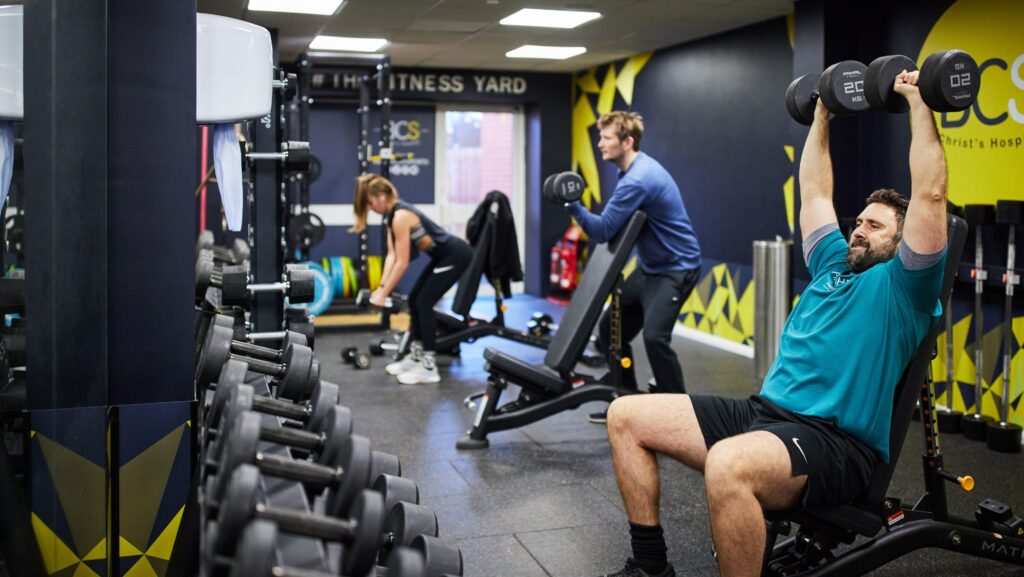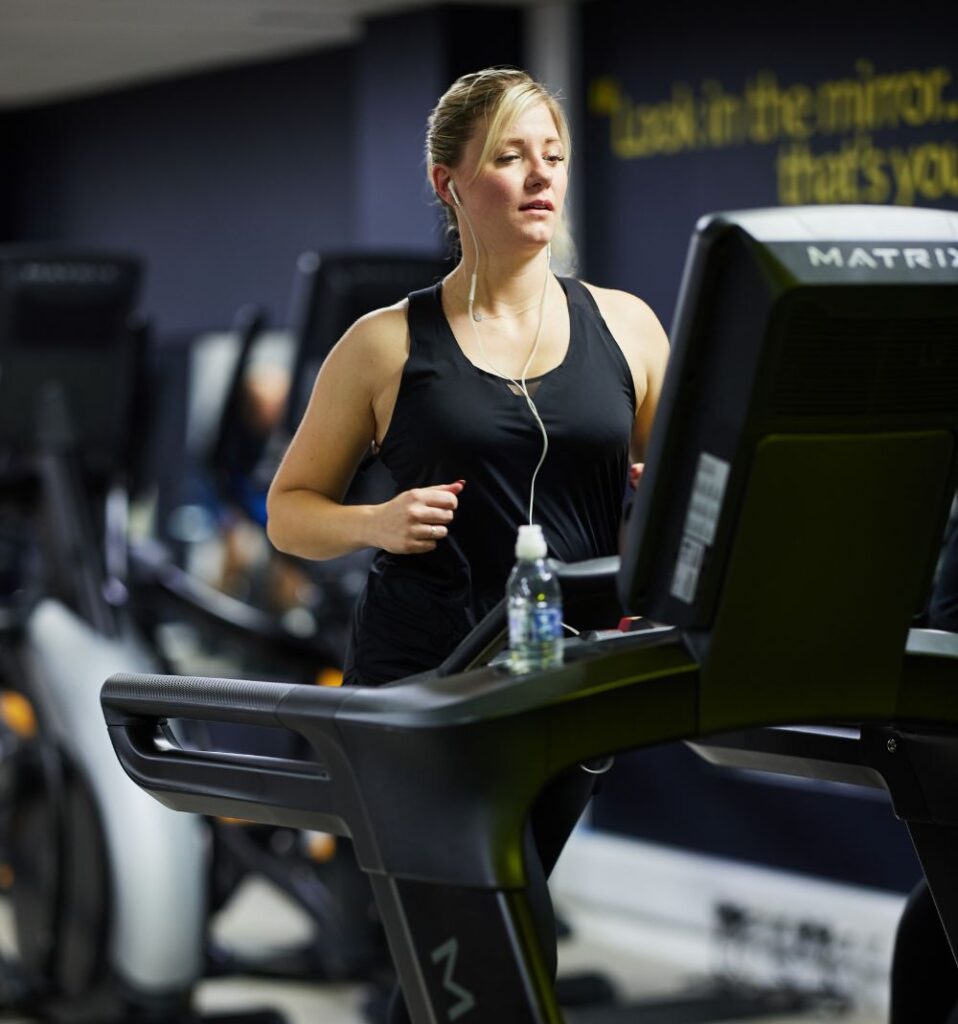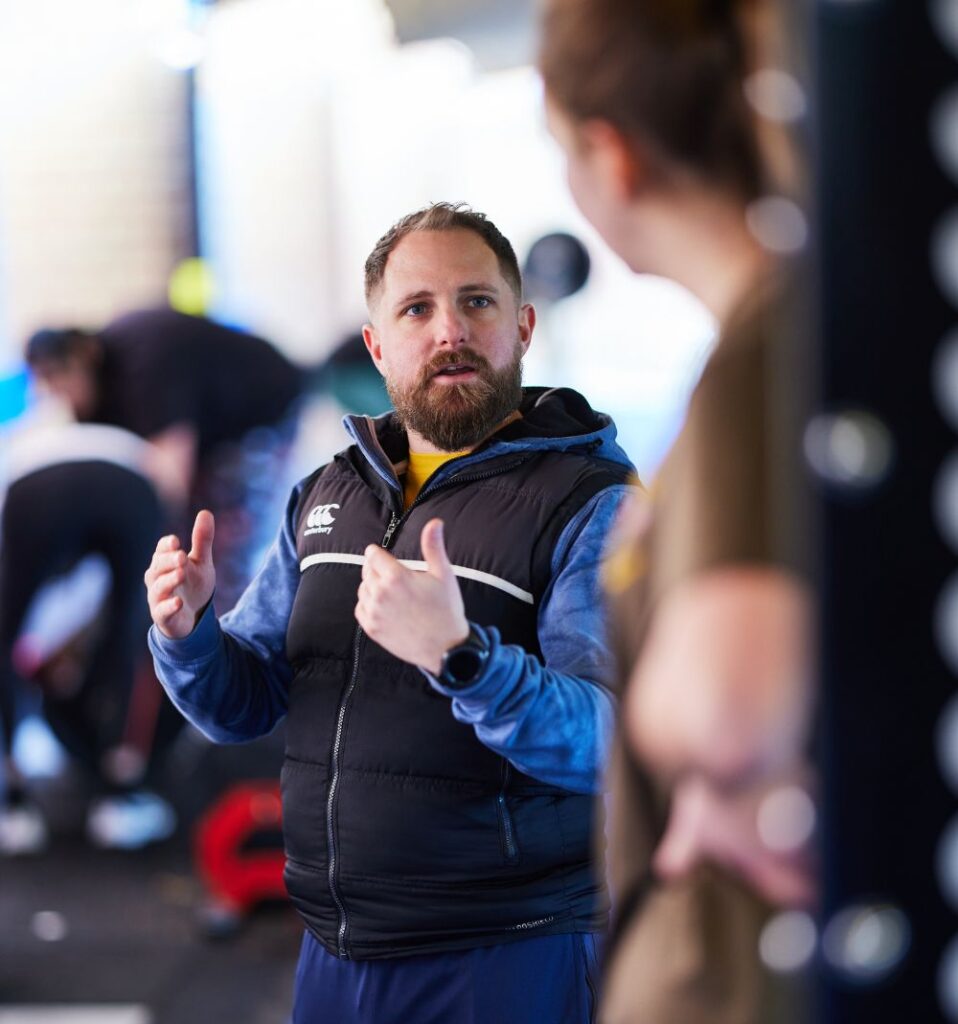
Starting a new routine in the gym can feel exciting but also a little daunting. With a huge choice of machines, weights, and training styles to choose from, it’s easy to wonder if you’re making the most of your exercise session. The good news is that the foundations of how to have an effective workout can help you know what to focus on.
At its core, an effective workout routine brings together clear goals, a balance of strength and cardio, and attention to good form and recovery. With consistency, the right nutrition, and steady progression, you can improve strength, support muscle growth, and enjoy better overall fitness.
At Bluecoat Sports, we’re proud to offer our members a modern gym in Horsham and outdoor Fitness Yard, with state-of-the-art equipment, group training sessions, and a team of dedicated personal trainers to help you reach your goals.
Want to become a member? Sign up today or call reception on 01403 247572, and we will be happy to help.
Key elements of an effective gym workout
Set clear fitness goals
The first step to success in any fitness programme is knowing what you want to achieve. Are you aiming for muscle growth, improved cardiovascular health, or weight loss? Each goal requires a different exercise programme.
For example:
- Muscle gain: Many people aiming to build muscle benefit from focusing on resistance training, especially compound lifts like squats and presses that work multiple muscle groups. Supporting your workouts with enough food, particularly protein, can help your body repair and grow stronger.
- Weight loss and body composition: If your goal is to lose weight, combining cardio workouts with some form of strength training can be useful. This approach not only helps increase energy use but also supports muscle mass, allowing you to feel fitter and stronger as you progress.
- General health and fitness: For overall wellbeing, the UK Chief Medical Officers suggest aiming for at least 150 minutes of moderate activity or 75 minutes of vigorous activity each week (for example, brisk walking, running, or HIIT), plus activities that strengthen the major muscle groups on two or more days.
At Bluecoat Sports, our personal trainers can help you set realistic goals and create an exercise programme tailored to your fitness level.
Plan a balanced routine
An effective exercise programme often works the body in different ways to build strength, stamina, and resilience. Many people find it helpful to include a mix of:
- Strength training: Movements such as squats, bench presses, and deadlifts can work multiple muscle groups and support both strength and muscle development. This type of resistance training is a strong foundation.
- Isolation exercises: Targeted moves like bicep curls or tricep pushdowns can help focus on a specific muscle group, improving balance and definition.
- Cardiovascular workouts: Activities such as treadmill running, rowing, cycling, or high-intensity interval training (HIIT) can support heart health, boost endurance, and contribute to weight management.
- Core exercises: Planks, twists, and stability work strengthen the trunk, helping posture and maintaining a healthy range of motion.

By combining these elements, you’ll develop strength, endurance, and flexibility while also improving key health markers, including blood pressure, cholesterol levels, and the risk of chronic disease.
However, the most important step is simply getting to the gym and completing your workout session. You don’t need to perfect every element right away – just showing up and moving your body brings real health benefits. These building blocks are worth considering as you grow in confidence and develop your fitness goals over time.
Prioritise good technique
One of the most common mistakes in the gym is rushing to lift heavier weights or push harder without focusing on good form. Whether you’re using free weights, resistance machines, or performing bodyweight exercises, paying attention to technique helps you stay safe and makes your workouts more effective. Poor form can slow progress and increase the chance of injury.
Here are some examples of common mistakes in the gym and ways to approach them differently:
| What Often Goes Wrong | Why It Can Hold You Back | A Better Approach |
| Skipping warm-up | Muscles aren’t ready, raising the risk of strains | Try 5–10 mins of light cardio or dynamic stretches |
| Lifting too heavy, too soon | Sacrifices form and increases injury risk | Start with manageable weights and build up gradually |
| Poor posture on machines | Reduces effectiveness and may cause discomfort | Adjust the machine setup to fit your body before use |
| Relying only on one exercise type | Misses out on training different muscle groups and energy systems | Mix strength training, cardio, and core work |
| Ignoring rest between sets | Limits recovery and reduces performance | Allow rest time between sets, based on intensity |
Paying attention to form and avoiding these pitfalls will help you get the most out of every workout, regardless of your fitness level.
Remember to warm up and cool down
Starting your workout with a short warm-up can help increase blood flow, loosen your joints, and prepare your muscle groups for movement. This makes exercise feel smoother and reduces the risk of injury. Many people find that a few minutes of light cardio, dynamic stretches, or simple bodyweight exercises, such as push-ups and pull-ups, are effective ways to prepare.
Finishing with a cool-down is just as valuable. Slowing things down with static stretches or controlled movements using lighter weights can give your muscles time to recover, support flexibility, and ease post-workout soreness.
Stay consistent and track your progress
The most effective workout isn’t always the hardest one – it’s the one you can keep up with week after week. Building consistency is what leads to long-term results, and keeping track of your progress can help you stay motivated. Many people find it helpful to log their weights, reps, and sets for strength training, note times or distances for cardio, or take photos to see changes in body composition over time.
To keep things interesting, you might try mixing up your exercises, joining a group class, or training with a friend. Small changes can help your routine feel less repetitive and keep you on track if motivation dips. Whether you prefer an app, a notebook, or a fitness tracker, the important thing is to notice your progress and celebrate the wins.

Balance recovery and progression
Effective training isn’t only about working hard in the gym, it’s also about giving your body time to recover and gradually increasing the challenge as you progress.
For recovery, it can help to:
- Aim for enough sleep each night (around 7–9 hours is often recommended).
- Include rest days in your workout splits.
- Pay attention to how your body feels – ongoing pain may signal overtraining or poor form.
For progression, many people find it helpful to:
- Use progressive overload by gradually adding weight, reps, or sets.
- Try new compound movements, classes, or equipment to stay challenged and avoid plateaus.
- Explore different training splits, such as upper/lower or push/pull/legs, especially if you’re more experienced.
Finding the right balance between rest and progression can help you see steady improvements, reduce injury risk, and keep your training enjoyable over the long term.
Remember your nutrition and hydration
What you eat and drink plays a huge role in how effective your workouts will be. A well-balanced diet rich in protein and essential amino acids supports muscle repair and muscle mass growth, while the right amount of carbohydrates provides energy for high-intensity exercise. A simple approach is to enjoy a carb-based snack before your exercise session for fuel, and a protein-rich meal afterwards to aid recovery.
Hydration is just as important. Even mild dehydration can reduce blood flow, make exercise feel harder, and slow muscle recovery. Aim to drink water regularly before, during, and after your workout routine to help keep your performance and energy levels high.
Get support from a personal trainer
Even when you understand the basics of an effective workout routine, it can be hard to know where to start or how to bring everything together. A personal trainer can help by creating a tailored workout programme designed around your fitness goals and current fitness level. They can set realistic targets, structure your training, and adjust your plan as you make progress.
Working one-to-one also means you’ll learn good form from the beginning, use equipment safely, and gain confidence in both strength training exercises and aerobic workouts. Whether your aim is muscle growth, weight loss, or simply improving overall muscular fitness, having expert guidance makes it easier to stay motivated and move forward effectively.
At Bluecoat Sports, we have a wonderful team of personal trainers with different areas of expertise on hand to help you achieve your goals.

Summary
An effective workout routine is built on simple but powerful foundations: set clear fitness goals, balance strength training, cardio, and core work, and always pay attention to good form. Supporting your workouts with the right nutrition, proper hydration, and sufficient recovery time helps your body adapt and perform better, while consistency ensures long-term progress.
As your fitness level improves, introducing variety, applying progressive overload, and tracking your progress can keep workouts both challenging and rewarding. Whether your focus is muscle growth, weight loss, or improving overall muscular fitness, combining these principles will help you build confidence, see results, and enjoy the full benefits of regular physical activity.
Become a member at Bluecoat Sports and benefit from expert support
When you join Bluecoat Sports Gym in Horsham, you get more than just access to equipment – you become part of a supportive fitness community. Our members enjoy:
- A wide selection of free weights and resistance machines
- Cardio equipment for aerobic exercise and high-intensity interval training (HIIT)
- An outdoor fitness yard with functional training equipment
- Guidance from experienced personal trainers who can create a tailored fitness programme just for you
Whether your goal is to build muscle, improve your body composition, or enjoy the health benefits of regular exercise, membership provides you with the tools, space, and professional support to succeed.
Become a member today and take advantage of our state-of-the-art facilities and expert personal trainers to achieve your fitness goals.
Gym workout FAQ
How many times a week should I go to the gym?
There’s no single answer – the most important step is simply getting to the gym when you can. Some people find that 3–5 sessions a week works well for their fitness goals, while beginners often start with 2–3 to allow for muscle recovery. However, even one workout is better than none, and building a consistent routine you enjoy is what matters most in the long run.
What should a beginner do at the gym?
If you’re new to the gym, the best first step is simply getting comfortable with the space and equipment. Focusing on proper form is a good foundation, and many beginners start with compound exercises, such as squats, push-ups, or pull-ups, which work multiple muscles simultaneously.
You might also try a few simple isolation exercises, such as bicep curls, to target a specific muscle group. Adding some aerobic exercise alongside resistance training can help support heart health and overall fitness, but the most important thing is to start at your own pace and build gradually.
How long should a gym workout last?
There’s no perfect length for an exercise session, even a short workout can be worthwhile. Many people find that 45–75 minutes is a good range for a balanced workout routine, while shorter high-intensity interval training (HIIT) sessions can deliver results in around 30 minutes.
If your focus is strength training for muscle growth, you may need a little longer, depending on your workout plan. What matters most is working at the right intensity with good form, including a warm-up and cool-down, and making the most of the time you have.
Should I do cardio or weights first?
There isn’t a single right order, as it depends on your fitness goals. If you’re aiming for muscle gain, increased muscular strength, or building lean muscle mass, many people start with strength training while their energy levels are highest. If your goal is endurance, weight loss, or improved cardiovascular fitness, starting with aerobic exercise can be beneficial.
Some people also alternate the order or split sessions across the week, which can be a flexible way to enjoy the benefits of both.